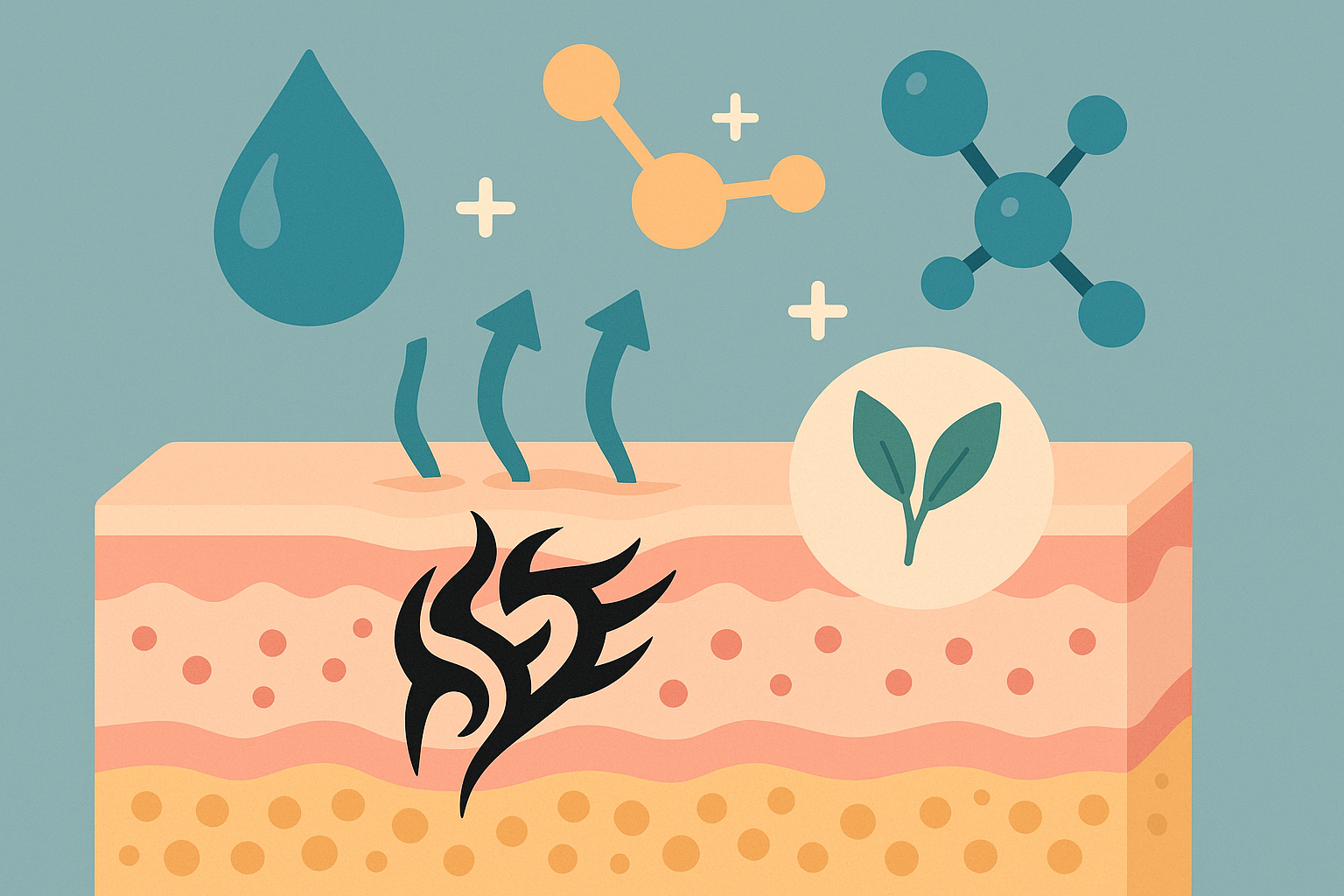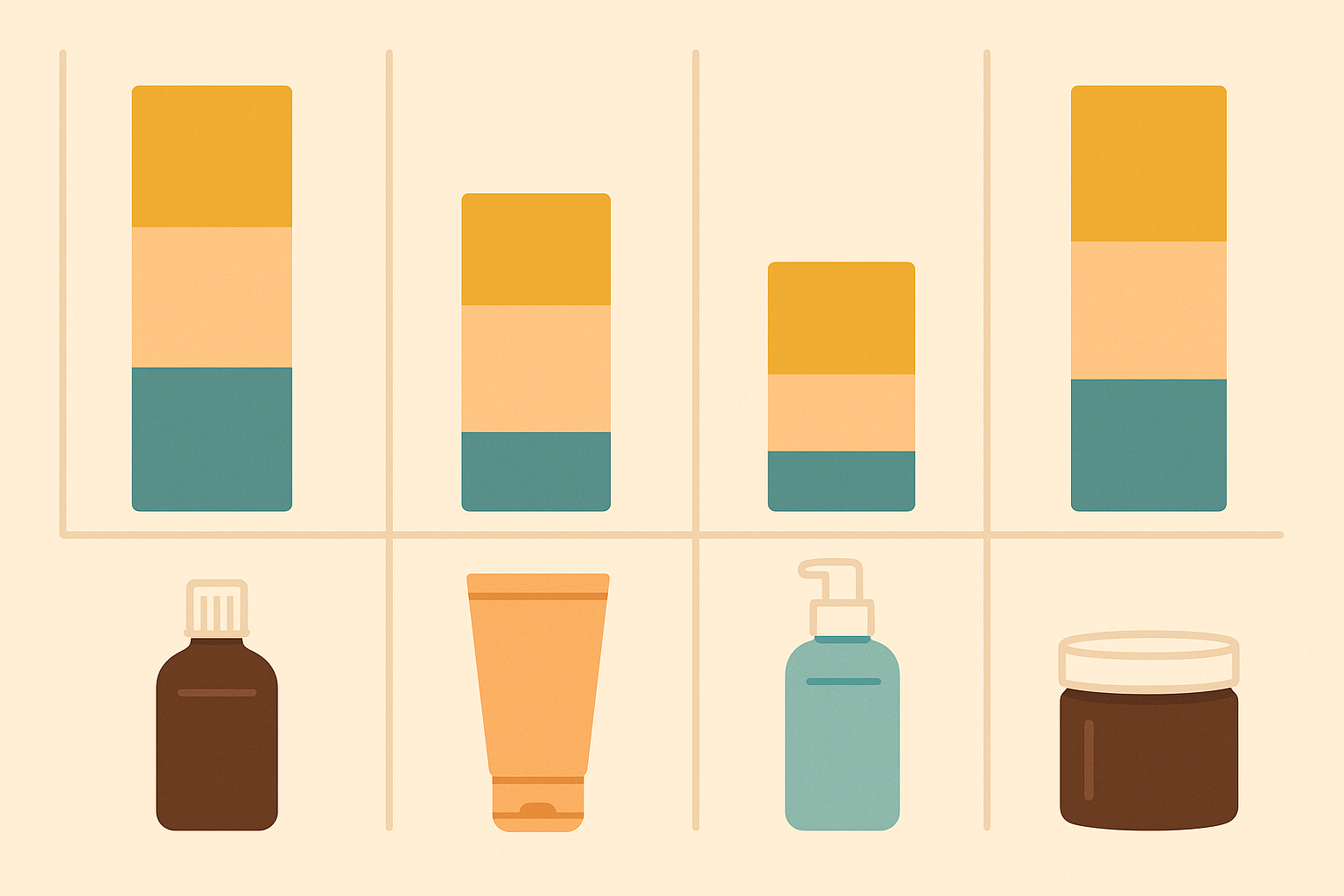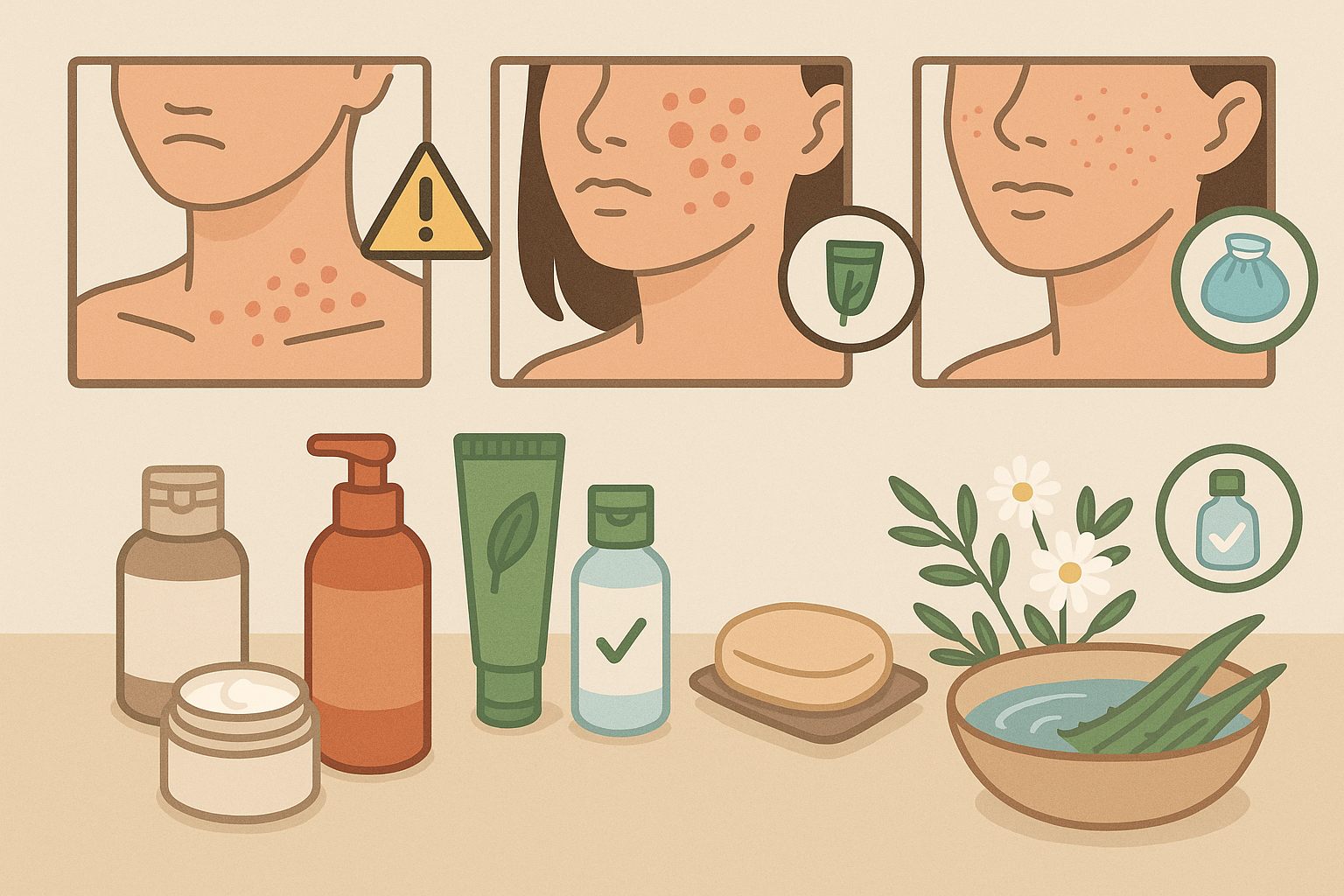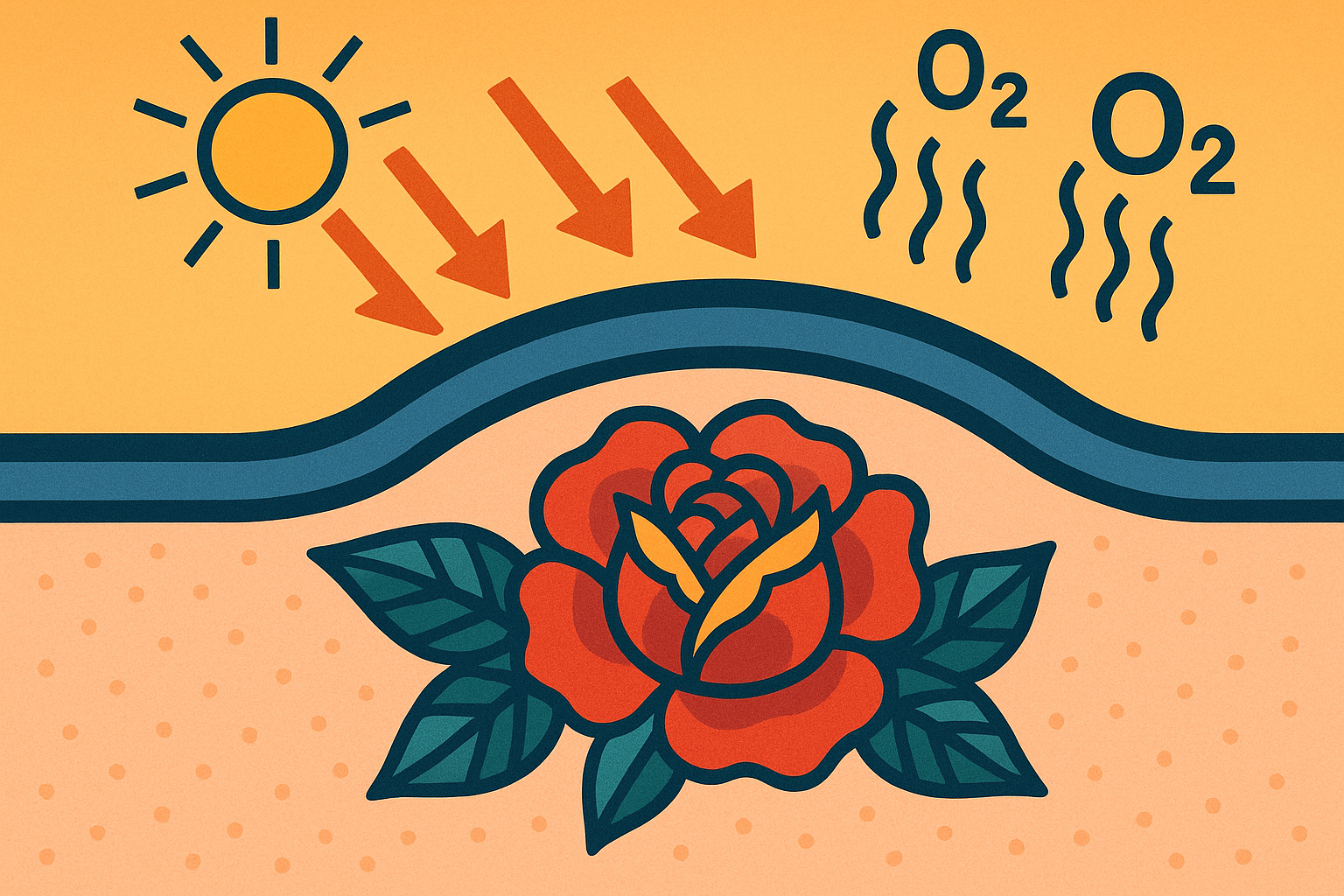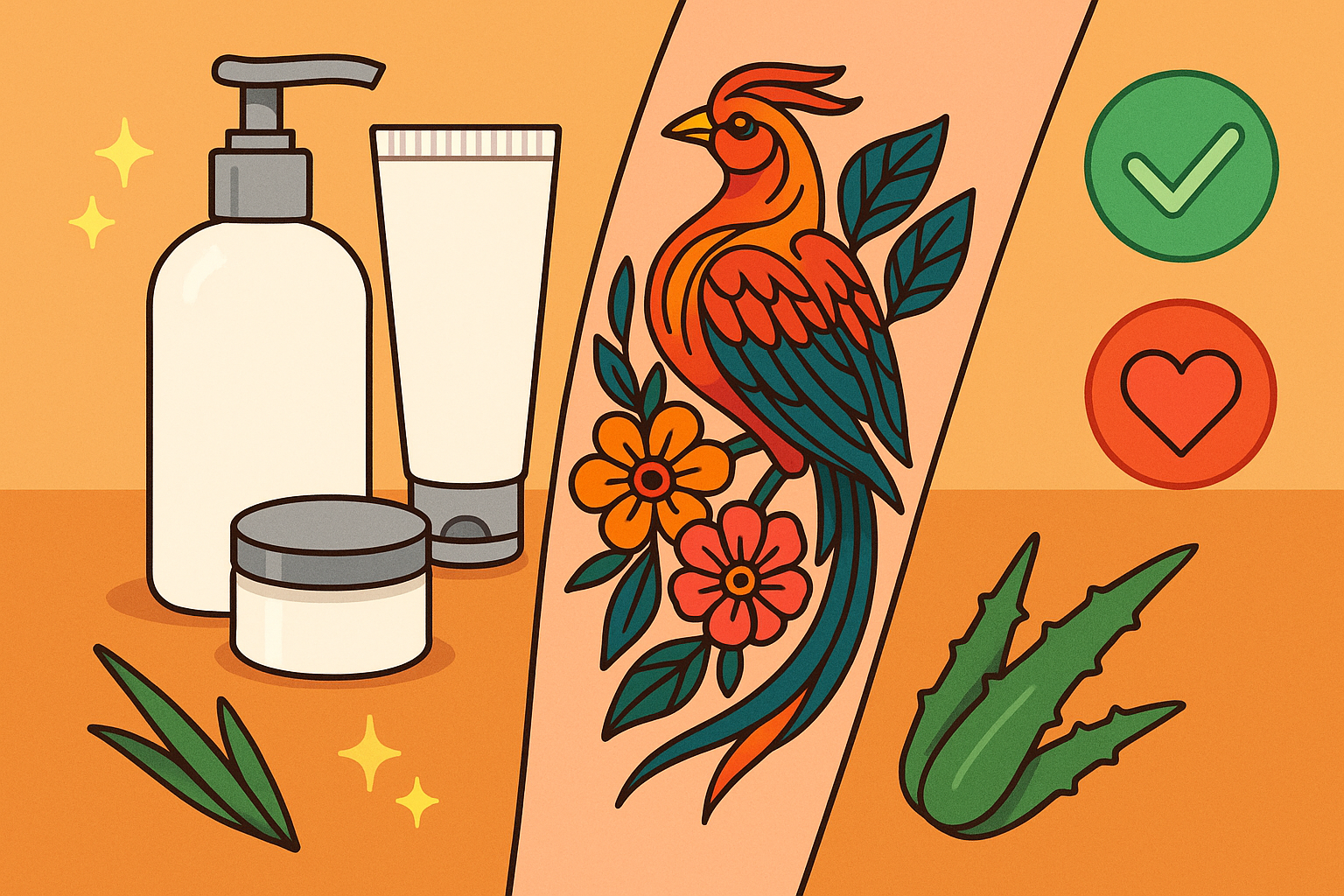Aquaphor on Tattoo: Why This $3 Drugstore Product Outperforms Expensive Aftercare Creams
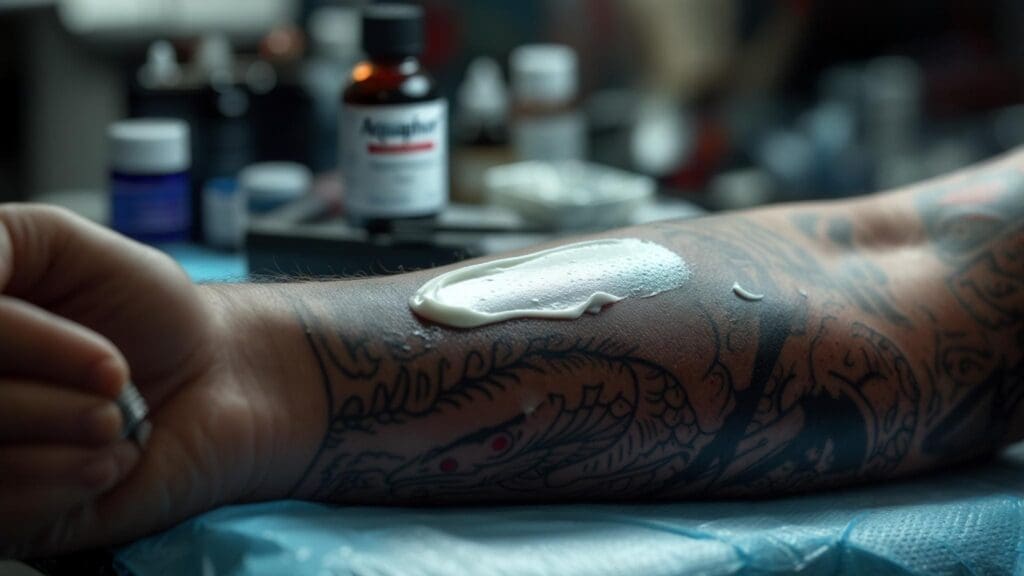
When I got my first tattoo, I was totally overwhelmed by all the aftercare advice floating around. Then I discovered something that changed everything: Aquaphor on tattoo healing works better than most expensive alternatives, and the numbers prove it. With over 89% of its 105K+ Amazon reviewers awarding it 5 stars according to Fashion Beans, this humble drugstore product has earned its reputation through proven results rather than marketing hype.
I’ve learned through trial and error why Aquaphor works so effectively, and I want to share the techniques that actually work for your tattoo investment.
Table of Contents
- Why Aquaphor Actually Works (It’s Pretty Cool)
- Those Scary First 24 Hours (And When You’re Doing It Wrong)
- Pro Tips Most People Never Learn
- What to Do When Things Go Sideways
- How Aquaphor Protects Your Colors Better Than You Think
- Working with Your Artist’s Recommendations (Without Getting Confused)
TL;DR
- Aquaphor keeps your tattoo moist without suffocating it – that’s the magic
- The first 24 hours are crucial – wait 2-3 hours after getting tattooed before your first application
- You need way less than you think (most people use way too much)
- Over-application causes more problems than under-application – seriously, less is more
- The ingredients work together to speed healing while keeping your ink stable
- Weather affects how often you should reapply – humid weather means less frequent applications
- If you’re having a reaction, stop using it immediately and call your artist
Why Aquaphor Actually Works (It’s Pretty Cool)
Most people grab Aquaphor because their tattoo artist recommended it, but they have no idea why it actually works. Let me break down the science behind why this $3 product is so effective for tattoo healing.
Here’s why Aquaphor actually works: it keeps your tattoo moist without suffocating it. The way it’s formulated creates the perfect healing environment through controlled moisture and barrier protection. The main ingredients work together to speed up healing without messing with your tattoo quality. This explains why a simple drugstore product often beats expensive specialized tattoo aftercare products.
Understanding how Aquaphor for tattoos works means looking at what each ingredient does and how they work together with your healing skin.
How Aquaphor’s Ingredients Actually Help Your Skin Heal
The magic happens when the ingredients work together at the cellular level. I’ve researched how each component works, and the way they team up is pretty fascinating.
Glycerin acts like a moisture magnet, pulling water from deeper skin layers while panthenol (which is basically vitamin B5) converts to something your skin cells can actually use. This conversion helps reduce inflammation and speeds up healing without affecting your tattoo pigments. When you use Aquaphor for tattoos, you’re creating the ideal healing environment that your body can work with.
Why Glycerin Makes Your Tattoo Heal Faster
Glycerin’s job is to create what I call a controlled moisture balance. This prevents scabbing while keeping that delicate balance your skin needs for proper ink retention.
The ingredient pulls moisture from both deeper skin layers and the air around your tattoo, creating perfect conditions for your skin to repair itself. You won’t get the problems that come with your tattoo being too dry or too wet when you apply the right amount consistently.
The Anti-Inflammatory Power of Panthenol
Panthenol gets into your skin and converts to something that helps reduce inflammation and swelling. This process speeds up the formation of new skin layers while reducing discomfort.
What’s really cool is that this happens without messing with your tattoo pigments during those critical first few weeks. Your body gets the healing benefits without interfering with how your ink settles.
Creating the Perfect Moisture Barrier Without Suffocating Your Skin
Here’s where Aquaphor gets really clever. It creates the ideal environment for tattoo healing by controlling how much moisture your skin loses while preventing bacteria from getting in.
The main ingredient forms a breathable barrier that allows necessary air exchange while maintaining the right moisture levels. This balance is crucial for preventing problems during the vulnerable healing period. According to Eucerin’s clinical research, “it is generally recommended to keep the plastic covering on for around 2-3 hours after getting tattooed because during this time, the skin is working hardest to heal itself.”
Understanding the complete healing process is essential, which is why many people also research comprehensive tattoo aftercare secrets to ensure their investment heals properly.
How the Protective Film Actually Works
The main ingredient in Aquaphor creates a breathable yet protective film over your healing tattoo. This film allows controlled air exchange while preventing bacteria from getting in and stopping too much moisture from escaping.
This barrier is smart enough to maintain healing benefits without creating the over-protection that can lead to soggy skin or delayed healing. I’ve seen too many people worry that they’re “suffocating” their tattoo, but the science shows that proper application actually helps your skin’s natural breathing process.
Getting the Application Thickness Right Every Time
Proper Aquaphor application means understanding exactly how much to use for the best healing without overdoing it. The right application involves specific timing and measured amounts based on your tattoo size.
I’ve figured out techniques for getting that perfect thin layer that maximizes healing while preventing problems from using too much product. Most people apply way too much, which actually slows down healing.
| Tattoo Size | Aquaphor Amount | How Often | Layer Thickness |
|---|---|---|---|
| Small (2×2 inches) | Rice grain size | Every 4-6 hours | Thin film |
| Medium (4×4 inches) | Pea-sized | Every 3-4 hours | Light coating |
| Large (6×6 inches) | Dime-sized | Every 2-3 hours | Even spread |
| Full sleeve | Quarter-sized | Every 2-4 hours | Apply in sections |
Working with Your Skin’s Natural Oil Production
Aquaphor is designed to work with your skin’s natural oil production during tattoo healing. Understanding this helps you maintain the right balance without disrupting how your skin normally functions.
Your skin’s natural healing works alongside the product rather than against it when you apply it correctly. I’ve noticed that people with naturally oily skin often need slightly less product, while those with dry skin benefit from more frequent applications.
Why Aquaphor Often Beats Expensive Tattoo Products
I’ve compared the ingredients in dozens of tattoo aftercare products, and the results surprised me. When you look at what’s actually in these products, Aquaphor’s healing properties often exceed those of purpose-built tattoo aftercare products in terms of effectiveness, cost, and long-term results.
The concentration of active healing ingredients in Aquaphor frequently beats specialized products. When you use Aquaphor for tattoos, you’re getting pharmaceutical-grade ingredients at drugstore prices.
The Truth About What’s Actually in These Products
Looking at the actual concentration and absorption rates of healing ingredients reveals surprising differences between Aquaphor and specialized tattoo products. Many expensive aftercare products contain lower concentrations of effective ingredients or use formulations that don’t absorb as well.
This makes the simple drugstore option more effective for tattoo healing. I’ve tested products that cost $30 per tube and found they had less active healing ingredients than $3 Aquaphor.
Those Scary First 24 Hours (And When You’re Doing It Wrong)
Timing is everything when it comes to successful tattoo healing with Aquaphor. I’ve seen people mess up their entire healing process because they didn’t understand when and how to apply it during different healing phases.
From those critical first 24 hours through complete skin healing, each phase needs specific application techniques and timing that support your body’s natural healing processes. Getting the timing wrong can cause complications that could damage your tattoo’s appearance, and I want to make sure you avoid those mistakes.
Using Aquaphor tattoo protocols correctly means understanding what your skin needs at each stage of recovery.
The Critical First 24 Hours After Getting Tattooed
The first 24 hours determine how well your tattoo heals and require specific Aquaphor application techniques that support natural healing while preventing complications. This phase involves managing that weird plasma stuff and establishing the foundation for healthy healing without interfering with your body’s immediate response.
Recent industry insights from Best Products emphasize that “someone with fresh ink should wash their tattoo at least once a week with gentle soap and apply a hydrating product at least two to three times daily, as necessary.”
Many people wonder about discomfort during this initial phase, and understanding tattoo pain levels can help you prepare for what to expect during healing.
Managing That Weird Plasma Stuff Without Messing Up Healing
Plasma weeping is completely normal during fresh tattoo healing, and proper Aquaphor application helps control this fluid without disrupting the natural inflammatory response your body needs for proper recovery.
I’ve figured out specific techniques that let you manage this fluid effectively while supporting the immune processes that clean your wound and prepare it for healing. The key is working with your body’s natural responses rather than trying to stop them completely.
Here’s exactly what you need to do:
- Wait 2-3 hours after tattoo completion before first application
- Gently clean with lukewarm water and fragrance-free soap
- Pat dry with clean paper towel (never rub)
- Apply thin layer of Aquaphor using clean fingertips
- Reapply every 4-6 hours as needed for moisture maintenance
Sarah got a 4×4 inch shoulder tattoo at 2 PM. Following proper protocol, she waited until 5 PM for her first Aquaphor application. She used about a pea-sized amount of product, spreading it evenly across the entire tattooed area. By maintaining this schedule and reapplying every 4-6 hours, her tattoo showed minimal plasma weeping and no signs of excessive dryness or scabbing during the critical first day.
Days 2-7: Managing the Angry Inflammation Phase
The inflammation phase requires careful Aquaphor management to reduce excessive swelling and discomfort while supporting the immune response necessary for proper healing. This period involves balancing anti-inflammatory benefits with the need to maintain your body’s natural healing processes.
You’re creating an effective barrier against bacterial infection during your tattoo’s most vulnerable time while managing the inflammation that can make this phase uncomfortable.
Reducing Swelling Without Interfering with Healing
Aquaphor’s properties can minimize uncomfortable swelling while avoiding interference with the necessary inflammatory processes that clean your wound and prepare it for healing.
This delicate balance requires understanding how to use the product’s anti-inflammatory benefits without suppressing the immune responses your healing tattoo actually needs. I’ve found that consistent, measured applications work better than trying to “treat” swelling with extra product.
Keeping Bacteria Out During the Danger Zone
Creating an effective barrier against bacteria using Aquaphor’s protective properties becomes crucial during the period when your tattooed skin is most susceptible to infection.
This involves understanding how to establish protection against harmful bacteria while maintaining the controlled environment necessary for optimal healing progression. The barrier you create needs to be selective – keeping bad stuff out while allowing good healing processes to continue.
Your application schedule should look like this:
- Increase application frequency to every 3-4 hours
- Monitor for signs of excessive moisture or soggy skin
- Adjust layer thickness based on climate and activity level
- Maintain consistent application schedule even during sleep
Days 8-21: Supporting New Skin Formation
The rebuilding phase requires optimized Aquaphor use to support new tissue formation while maintaining tattoo clarity and preventing complications. This period focuses on helping your body build new collagen and speed up the formation of new skin layers while ensuring that everything forms properly.
You want to prevent premature peeling or flaking that could damage your tattoo’s integrity during this crucial rebuilding phase.
During this phase, many people experience tattoo peeling, which is completely normal when managed properly with products like Aquaphor.
Helping Your Body Build New Collagen Properly
Aquaphor’s moisturizing properties create optimal conditions for collagen production without causing excessive scar tissue formation that could affect your tattoo’s appearance.
Understanding how to support your body’s natural collagen building during this phase helps ensure that your skin rebuilds itself in a way that preserves your tattoo’s clarity and detail. The goal is supporting your body’s natural collagen production without overdoing it.
Speeding Up New Skin Layer Formation
Supporting new skin formation involves maintaining proper moisture levels that prevent premature peeling or flaking while encouraging healthy surface layer regeneration.
This process requires specific protocols for application frequency and technique adjustments as your skin progresses through different stages of renewal. I’ve noticed that people who adjust their routine during this phase get much better final results.
Adjust your routine like this:
- Reduce application frequency to 2-3 times daily
- Monitor skin texture changes and adjust accordingly
- Begin gentle massage techniques during application
- Watch for signs of complete surface healing
Pro Tips Most People Never Learn
Look, I’ve made every mistake in the book with Aquaphor, and I want to save you from the same headaches. These aren’t just fancy techniques – they’re the difference between a tattoo that heals beautifully and one that makes you cringe every time you look at it.
Most people just slap on some Aquaphor and hope for the best. But if you’re going to invest hundreds (or thousands) in a tattoo, why not learn how to take care of it properly?
The Micro-Dosing Method That Actually Works
Okay, “micro-dosing” sounds super technical, but it’s really just about not drowning your tattoo in product. I learned this the hard way when I turned my forearm tattoo into a gooey mess by using way too much.
Here’s the thing – you need way less than you think. I’m talking about amounts so small you’ll question whether you’re using enough. But trust me, less is definitely more here.
Measuring Your Tattoo for Perfect Coverage
This might sound obsessive, but measuring your tattoo actually helps. You don’t need to be a mathematician – just eyeball the length and width so you know roughly how much product to use.
Here’s my super simple approach:
- Look at your tattoo and estimate the size (don’t stress about being exact)
- Start with a tiny amount – seriously, like a grain of rice for small tattoos
- Spread it around gently with clean fingers
- If it’s not covering everything, add a little more
- If it looks shiny or thick, you’ve used too much
Adjusting for Weather and Climate Conditions
Your tattoo doesn’t heal the same way in Florida humidity versus Colorado dryness. I found this out when I moved from a humid climate to a dry one and couldn’t figure out why my aftercare routine wasn’t working anymore.
Hot, humid weather? Your tattoo stays moist longer, so you need less Aquaphor and can wait longer between applications. Cold, dry weather? You’ll need to reapply more often because everything dries out faster.
It’s really that simple – just pay attention to how your skin feels and adjust accordingly.
| Climate Condition | Application Frequency | Layer Adjustment | Special Considerations |
|---|---|---|---|
| High Humidity (>70%) | Every 6-8 hours | Thinner layers | Increase air circulation |
| Low Humidity (<30%) | Every 2-3 hours | Standard layers | Monitor for over-drying |
| Hot Weather (>85°F) | Every 3-4 hours | Lighter application | Avoid sun exposure |
| Cold Weather (<40°F) | Every 4-5 hours | Slightly thicker | Protect from wind |
Making Aquaphor Work with Your Real Life
Let’s be real – you can’t just sit around babying your tattoo for three weeks. You have a job, you want to work out, you have a life. The good news is that you can make this work without becoming a hermit.
Exercise and Sweat Management Strategies
I’m not going to tell you to skip the gym for a month (though your artist might). If you’re going to work out, just be smart about it.
Before you exercise, put on a slightly thicker layer of Aquaphor – think of it as protection. After you work out, gently clean your tattoo with lukewarm water (no scrubbing!) and reapply.
My friend Jake kept up his CrossFit routine during his tattoo healing by doing exactly this. His tattoo healed perfectly, and he didn’t lose his mind from being sedentary.
Your workout game plan:
- Extra Aquaphor before you start
- Keep workouts reasonable (maybe skip the 2-hour sessions for now)
- Clean up right after – don’t let sweat sit on your tattoo
- Reapply Aquaphor within 15 minutes of cleaning
- If something feels off, take a rest day
Mike, a personal trainer with a new forearm tattoo, modified his routine by applying Aquaphor 30 minutes before his 6 AM workout. He covered the tattoo with a breathable athletic bandage during training, then immediately cleaned and reapplied the product post-workout. This protocol allowed him to maintain his fitness schedule while achieving optimal healing results.
Keeping Your Tattoo Protected at Work
Whether you’re in an office or working with your hands, you need a strategy that won’t get you weird looks from coworkers.
Office job? Easy – just reapply during bathroom breaks. Working outdoors or with your hands? You might need to get creative with protective covering during the day, then do a thorough clean and reapply when you get home.
The key is being consistent without making it weird or obvious.
What to Do When Things Go Sideways
Sometimes things go sideways, and when they do, you need to know how to fix them fast. Don’t panic – most problems are totally fixable if you catch them early.
Fixing Over-Application Problems Before They Get Worse
If your tattoo looks like a greasy mess or feels soggy, you’ve used too much Aquaphor. I did this with my first tattoo and freaked out thinking I’d ruined it. Spoiler alert: I didn’t, but I learned my lesson.
Getting Your Moisture Balance Back on Track
Here’s what you do if you’ve gone overboard:
Immediate damage control:
- Gently dab (don’t rub!) excess product off with a clean paper towel
- Let your tattoo air dry for about an hour
- Don’t let it get bone dry – that’s just as bad
- Start over with a much smaller amount
- Scale back how often you’re applying it
The goal is finding that sweet spot where your tattoo feels comfortable – not dry and tight, but not soggy either.
Dealing with Allergic Reactions and Sensitivities
Some people just can’t use Aquaphor, and that’s okay. If your tattoo area gets red, itchy, or develops a rash that wasn’t there before, you might be having a reaction.
Figuring Out Which Ingredient Is Causing Problems
Most reactions happen because of the lanolin or fragrance in some Aquaphor products. Make sure you’re using the fragrance-free version first. If you’re still having issues, it might be time to switch products entirely.
Switching Products Without Messing Up Your Healing
If you need to bail on Aquaphor, don’t just stop cold turkey. Clean your tattoo gently, let it air dry, then switch to whatever alternative your artist recommends.
If you’re having a reaction:
- Stop using Aquaphor immediately
- Clean the area gently with lukewarm water
- If it’s really irritated, a cool, damp cloth can help
- Call your artist or doctor if things look serious
- Have a backup plan ready (ask your artist what to use instead)
How Aquaphor Protects Your Colors Better Than You Think
Here’s something cool that most people don’t realize: Aquaphor isn’t just keeping your tattoo moist – it’s actually protecting your investment in ways you can’t see.
Keeping Your Tattoo Colors Vibrant During Healing
Your fresh tattoo is basically an open wound filled with expensive ink. All sorts of things can mess with those colors while your skin is healing, and Aquaphor acts like a protective shield.
This protection is especially important during those critical first few weeks when your tattoo is most vulnerable to damage from UV exposure and other environmental factors. The difference between a tattoo that stays vibrant and one that fades prematurely often comes down to proper aftercare during those crucial first few weeks.
Is it ok to use Aquaphor on a new tattoo? Absolutely, and here’s why it’s actually protecting your colors in ways you probably never realized.
UV Protection You Didn’t Know You Were Getting
Even though Aquaphor isn’t sunscreen, that layer of product does block some UV rays. It’s not much, but during those critical first few weeks when your tattoo is super vulnerable, every little bit helps.
This light protection helps preserve color integrity during the vulnerable healing phase when your skin’s natural protective mechanisms are compromised. Even indirect sunlight can cause damage during the first few weeks.
Of course, you should still avoid direct sunlight entirely during healing. But if you’re walking from your car to a building, that thin layer of Aquaphor is giving you a tiny bit of extra protection.
Preventing Color Changes from Oxidation
This gets a little nerdy, but basically, oxygen can mess with fresh tattoo ink and change colors. Aquaphor creates a barrier that limits how much oxygen gets to your healing tattoo.
This protection is particularly important for certain ink colors that are more susceptible to chemical changes during the healing process. Reds and yellows are especially vulnerable to oxidation damage.
This is especially important for reds and yellows, which are notorious for fading or shifting colors if they’re not protected properly during healing.
Stopping Ink Migration and Blowout Issues
Nobody wants their crisp line work to turn into a blurry mess. While Aquaphor can’t fix bad tattoo work, it can help your skin heal in a way that preserves the details you paid for.
Understanding how different tattoo locations heal is crucial, especially for popular placements like shoulder tattoos where proper aftercare can significantly impact the final result.
How Aquaphor Affects Lymphatic Drainage Around Your Tattoo
Your body sees tattoo ink as foreign material and tries to clean it up through your lymphatic system. This is normal, but you want this process to happen gradually and evenly.
Proper Aquaphor application helps create stable conditions so your body’s cleanup crew doesn’t go overboard and remove too much ink or cause it to spread where it shouldn’t.
Keep drainage healthy by:
- Applying Aquaphor in thin, even layers
- Avoiding massage or manipulation for the first few days
- Watching for unusual swelling or fluid buildup
- Keeping your application schedule consistent
Supporting Skin Elasticity to Prevent Line Distortion
Tight, inflexible skin can cause tattoo lines to blur or shift as everything heals. Aquaphor keeps your skin supple and flexible, which helps maintain those crisp edges and fine details.
This is especially important for detailed work or tattoos in areas that move a lot, like hands or joints.
Jennifer’s detailed line work tattoo on her wrist required precise healing to maintain crisp edges. By applying Aquaphor in measured amounts every 4 hours and avoiding over-manipulation, she prevented the skin tension that could have caused line blurring. Her consistent application schedule supported proper skin elasticity, resulting in sharp, clear lines that matched the original design perfectly.
Working with Your Artist’s Recommendations (Without Getting Confused)
Your artist has seen thousands of tattoos heal, so when they give you specific instructions, there’s usually a good reason. But sometimes their advice isn’t as clear as it could be.
Understanding how to properly interpret and implement your artist’s specific guidance, while knowing when to seek clarification or make adjustments, creates a collaborative approach that maximizes your tattoo’s healing potential. Your artist has seen thousands of tattoos heal, and their recommendations are based on real-world experience.
Understanding What Your Artist Actually Means
When your artist says “apply Aquaphor as needed,” what does that actually mean? How much is enough? How often is too often? Don’t be afraid to ask for specifics.
Good artists want your tattoo to heal perfectly, so they should be happy to clarify their instructions. If they seem annoyed by questions, that’s a red flag.
Many clients want to understand the full investment they’re making, including both the initial tattoo cost and the ongoing aftercare requirements for optimal results.
Getting Clear Instructions You Can Actually Follow
Before you leave the shop, make sure you understand:
Document everything:
- How much Aquaphor to use (ask them to show you)
- How often to apply it
- When to stop using it and switch to regular lotion
- What warning signs to watch for
- How to contact them if you have questions
Don’t rely on your memory when you’re dealing with adrenaline and excitement after getting tattooed.
Monitoring Your Progress Like a Pro
Learning to assess how your tattoo is healing helps you make smart adjustments to your care routine. You don’t need to be a medical expert – just pay attention to what’s normal for you.
For those considering larger pieces, understanding how half-sleeve tattoos heal can provide valuable insights into managing extended healing periods with proper Aquaphor protocols.
Recognizing When Your Tattoo Hits Different Healing Stages
Every tattoo goes through predictable phases, and each one needs slightly different care. In the beginning, you might need Aquaphor every few hours. Later, you might only need it twice a day.
Track your progress:
- Take photos if your artist says it’s okay (helps you see changes)
- Note how your skin feels and looks each day
- Adjust your routine based on what you’re seeing
- Know when to call for help (excessive redness, heat, or weird discharge)
- Be ready to transition to regular lotion when the time comes
The goal is becoming your own healing monitor between check-ins with your artist.
Final Thoughts
Look, taking care of a healing tattoo doesn’t have to be rocket science. Aquaphor works because it’s simple, effective, and doesn’t try to do too much. The key is understanding why it works so you can use it properly.
Your tattoo is an investment – not just financially, but personally. You chose that design for a reason, and you want it to look amazing for years to come. Taking a few weeks to baby it properly is totally worth it.
Remember, everyone heals differently. What worked perfectly for your friend might need tweaking for you. Pay attention to your body, follow your artist’s advice, and don’t be afraid to ask questions when something doesn’t seem right.
The most important thing? Don’t stress too much about being perfect. As long as you’re keeping it clean, properly moisturized, and protected from the sun, you’re probably doing fine. Your body knows how to heal – you’re just helping it along.
At Tattoo Generator IQ, we know that getting the perfect design is just the beginning. Our AI-powered platform helps you create stunning, personalized tattoo designs, but we also want to make sure you know how to take care of them properly. Check out our design tools and aftercare resources to make sure your next tattoo turns out exactly how you imagined it.

